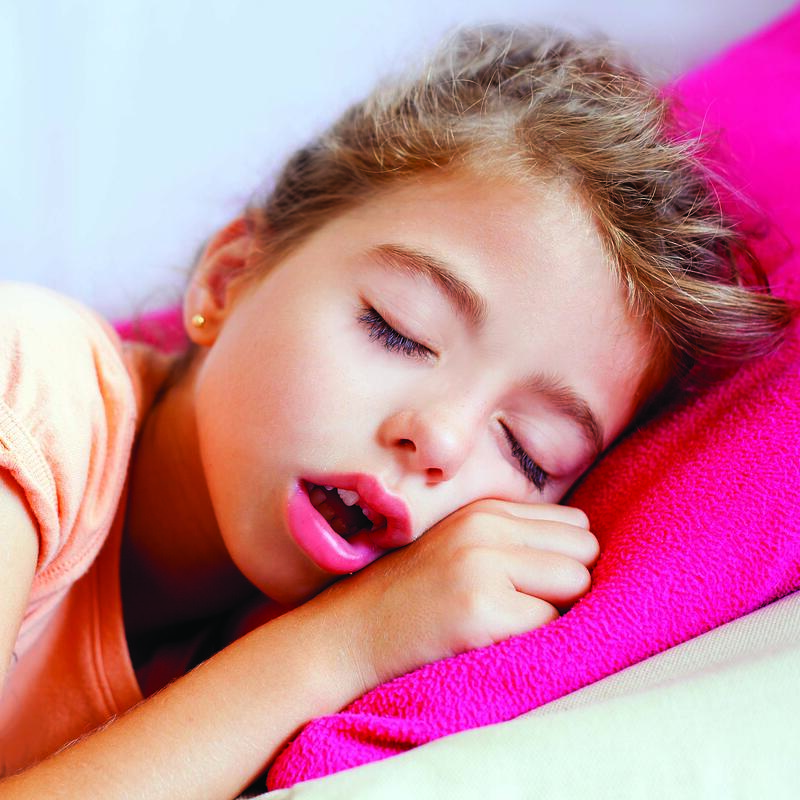Healthy Sleep for Children
It is common knowledge that adequate, good-quality sleep is important in the development of children and translates to better quality of life for children of all ages. Yet, childhood insomnia is the most common sleep complaint from parents. Although certain sleep disorders may cause insomnia, the difficulty in initiating or maintaining sleep may be due to poor sleep habits or sub-optimal sleep environment.
Good sleep habits include bedtimes, wake times, types of activities around bedtime, sleep schedules, sleep environment and diet. Good sleep habits are achieved by optimizing behaviors that promote sleep and avoiding those that sabotage it.
Training the mind to recognize bedtime is one method of promoting sleep. Having the same bedtimes and wake times daily help our bodies synchronize our internal clocks (circadian rhythm) with the environmental clock (time) and prepares us to fall asleep as bedtime approaches. Similarly, having the same bedtime routine nightly also signals our mind that sleep is approaching.
Other factors that can influence the ability to fall asleep are the environment and certain daytime activities. Ideally, the room should be quiet and dark. A room temperature on the cooler side (between 65-70 degrees) with blankets to stay warm is optimal. Avoid using the bedroom for any other activities aside from sleeping. Screen time on any electronic devices within two hours of bedtime exposes the eyes to excessive amount of light and should be avoided.
Exercise during the day can promote better sleep, but it may disrupt the ability to fall asleep if done within four hours of bedtime. Caffeine can exert its waking effect up to six hours after ingestion and should be avoided later in the day.
The American Academy of Pediatrics (AAP) has stated that adequate sleep in children leads to improved behavior, better learning, and higher quality of life. Children with inadequate sleep are at increased risk for obesity, depression and hypertension.
The AAP has endorsed the recommendation from the American Academy of Sleep Medicine (AASM) regarding sleep hours for different age groups. (The listed hours are per 24 hours including naps.)
- 4 months to 12 months: 12 – 16 hours
- 1 to 2 years of age: 11 – 14 hours
- 3 to 5 years of age: 10 – 13 hours
- 6 to 12 years of age: 9 – 12 hours
- 13 to 18 years of age: 8 – 10 hours
Aside from certain sleep habits and sleep environment, another common cause of insomnia in children is obstructive sleep apnea.
Unlike adults, children with obstructive sleep apnea may present with difficulty falling asleep and frequent nighttime awakenings as well as symptoms similar to attention deficit and hyperactivity disorder (ADHD) such as difficulty focusing, poor school performance, and hyperactivity.
In fact, up to 25 percent of children diagnosed with ADHD may actually have undiagnosed poor sleep that is manifesting the ADHD symptoms. It is important to treat obstructive sleep apnea not only to address the presenting symptoms, but also to prevent the complications that can develop in the future, such as diabetes, obesity, heart failure and Alzheimer’s disease.
Treatments for certain risk factors of obstructive sleep apnea (e.g., enlarged tonsils, retracted lower jaw) may prevent the condition from returning in the future.

Dr. Harry Yuan is a board-certified pediatric pulmonologist and sleep physician. He works as the Pediatric Medical Director at the Alaska Sleep Clinic in Anchorage, Wasilla, Soldotna and Fairbanks, as well as Director of Pediatric Pulmonology and Sleep Medicine at Providence Children’s Hospital. Visit alaskasleep.com.



